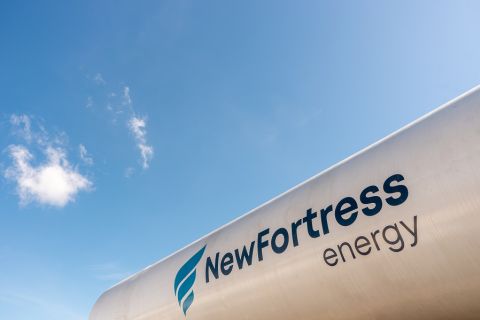?Think $25,000 an acre is the top of the market for the Haynesville play? Don’t stop there.
When looking at Chesapeake Energy Corp.’s deal with Plains Exploration & Production, one may think acreage prices are “topping out,” says Deutsche Bank Securities Inc. research analyst Shannon Nome in her report “From Shale To Shining Shale: A Primer On North American Natural Gas Shale Plays.”
Instead, “We believe Chesapeake’s monetization was simply motivated by a pressing need for cash, and not a statement that $25,000 to $30,000 per acre is a high-water mark for leasehold values; in fact, we see ample room for rising acreage value from here.”
She estimates for the play a base case of $14-million-per-well net present value, incorporating an industry-standard 10% discount rate.
“Assuming a drilling density of 80 acres per well, this would imply an amazingly high pretax net present value of $175,000 per acre. On 60-acre spacing, that value theoretically expands to a stunning $233,000 per acre.
“While these values are eye popping, we note that they are pretax and impute a 100% chance of success, and few operators are likely to lease acreage without applying some sort of risk factor.
“As well, even though IRRs (internal rates of return) theoretically break even at a $175,000-per-acre leasehold price, most companies would find the associated F&D (finding and development) costs—$4 per thousand cubic feet equivalent, inclusive of the leasehold—to be unacceptable.
Nevertheless, these data points—and sensitivities—support our contention that per-acre prices could very well push up toward the $50,000 threshold—unrisked—before F&D costs would move much above $2 per thousand cubic feet equivalent and before IRRs would fall much below 50%.”
Nome’s shale report includes these topics: “Shales Gone Wild,” “Shale Gas: Play By Play,” “Got Haynesville? Drilling Down On A Red-Hot Emerging Shale Play,” “Rockies Shales: Almost Ready For Primetime” and “Shale Shock: Macro-Impact.”
On the Haynesville, she has developed a macro-production-forecast for the play, with input from U.K.-based energy-research and -consulting firm Wood Mackenzie.
“Our base-case type well analysis incorporates initial production and estimated ultimate-recovery assumptions that appear to be near the midpoint of current industry expectations at 10 million cubic feet equivalent per day and 7 billion cubic feet equivalent per well, respectively.
“Other key assumptions include a $25,000-per-acre base-case leasehold cost—this is ‘baked into’ the F&D shown and also incorporated within the net present value analysis as part of the well cost; 80-acre well spacing—although based on other shale plays, ultimate spacing could tighten to 40 and 60 acres; a $1.50-per-thousand-cubic-foot-equivalent operating cost—potentially conservative based upon recent commentary from operators; and an 80% initial-year decline rate—conservative relative to the 73% figure cited by Chesapeake in a July conference call.”
Nome says Haynesville acreage costs “have risen at a very rapid pace. Lease bonuses in the state of Louisiana were less than $200 per acre as of early this year, but quickly jumped to the $5,000 to $10,000 realm shortly following the March play announcements from Petrohawk Energy Corp. and Chesapeake.”
More recently, bids and land transactions have been rising into the $15,000- to $20,000-per-acre range, with a mid-June transaction between Goodrich Petroleum Corp. and Chesapeake pricing out at about $17,000. “Royalties have stayed steady on the whole, averaging 25% to date.”
She adds, “The Haynesville requires very deep pockets.” At $6- to $7 million per well, the cost of drilling up a sizeable acreage position quickly exceeds a smaller player’s ability to fund.
“For this reason, we believe M&A and/or ongoing joint-venture announcements will be prevalent, as larger, better-funded entrants seek to consolidate positions within the play, or to initiate footholds outright.”
Are the majors on the move? Are they finding the Haynesville? Shell found Canada’s Montney shale-gas play, announcing recently it intends to buy Duvernay for cash. And, BP is taking a big Woodford shale position in Oklahoma from Chesapeake for $1.75 billion—the “high end” of expectations, according to Nome. (For more on this, see “Major Oil, Meet Shale” at OilandGasInvestor.com.)
Shell and ExxonMobil at least have “starter” stakes in the Haynesville, she says.
Nome concludes, “While these sophisticated, yet large and less-nimble entities, clearly have the financial and technical resources to be a dominant force in domestic shale plays, to date it has been the independents leading the way.
“However, as more datapoints unfold with respect to the Haynesville in particular, the true financial requirements begin to beg questions as to whether this will finally be the catalyst to get the majors interested in scaling back up investment in the U.S. after decades of downscaling.”
If someone is feeling left out of the land rush for the Fayetteville, Barnett, Marcellus and Haynesville shale plays, there are other opportunities—in the Rockies where just a few players are now tapping the potential, Nome says.
Six emerging Rockies plays are particularly worth watching: Gothic, Cody, Cane Creek, Baxter, Pierre and Lewis. These are at 3,000 to 16,000 feet with multiple pay zones and initial production rates as high as 12 million cubic feet per day so far.
The Cane Creek and Pierre shales may hold many trillion cubic feet of gas reserves. The Baxter, Gothic and Cody are still in testing with many unknowns. The Mancos is currently in production and commingled with other formations, and just now being tested as stand-alone.
Here is what Nome has written about each:
Cane Creek. While perhaps the most unknown of the six, the Cane Creek shale stands out as the highest-performing play based on recent well results. The formation consists of stacked shales, interbedded with sandstones and carbonates. The total organic content of Cane Creek can be up to 28%. The formation is estimated to have resources of several trillion cubic feet. Delta Petroleum, the only known operator in the play, has drilled several producing vertical wells, and is in the process of drilling horizontal completions, which should improve recoveries.
Gothic, Cody. Bill Barrett Corp. is the main operator in these shales. In the Paradox Basin’s Gothic shale, the company is partnered with Williams Cos. and shooting 3-D seismic to identify horizontal test-well locations. Another potential pay zone above Gothic is the Hovenweep shale, where the company plans to drill a vertical test this year. In the Cody, Bill Barrett and partner Devon Energy Corp. are assessing test-well results and 3-D seismic.
?Pierre. The Pierre shale is operated by Pioneer Natural Resources, the top producer in the Raton Basin and the only company to release results from the shale to date. XTO Energy and El Paso Corp. hold acreage adjacent to Pioneer and are assumed to be testing the shale.
So far, Pioneer has drilled 10 vertical wells targeting one zone. Although this shale is still being tested, Pioneer estimates it has up to 21 trillion cubic feet of gas in place. Significant upside may be realized following the drilling of horizontal wells, which will test the four remaining zones in the Pierre.
Pioneer sees 1,200 drilling locations based on 80-acre spacing
Baxter. The Baxter shale is an overpressured reservoir in the Vermillion Basin, which is within the Greater Green River Basin. It has one of the largest gas-in-place resources of any U.S. shale, estimated to be 440 billion cubic feet per square mile. However, Questar, Kodiak Oil & Gas and its partner, Devon Energy, have not been able to fully exploit the shale due to high well costs and low IPs.
Lewis. The Lewis shale, a sandy siltstone with four pay intervals, is commingled with the deeper Mesaverde and Dakota formations in the San Juan Basin and the shallower Almond formation in the Greater Green River Basin. Operators typically complete the Lewis as a secondary zone. In the San Juan Basin, the main players are ConocoPhillips,
Recommended Reading
GeoPark, Vitol Sign Offtake Deal for Llanos 34 Block
2024-05-12 - Under the agreement, GeoPark will sell and deliver to Vitol a minimum of 20,000 bbl/d of oil from the Llanos 34 Block in Colombia, which GeoPark holds 45% working interest.
Magnolia Bolts-on 27,000 Acres in South Texas’ Giddings Field
2024-05-09 - Magnolia Oil & Gas said it paid $125 million to a private operator to acquire the acreage, which has minimal production.
Tetra Tech Acquires Convergence Controls & Engineering
2024-05-09 - Tetra Tech is acquiring Convergence Controls & Engineering to expand its digital water and energy offerings.
Kinetik Launches Delaware Basin M&A Valued at $1.3B
2024-05-09 - Kinetik Holdings will buy Durango Permian infrastructure for $765 million, excluding contingency payments, and sell its interests in the Gulf Coast Express pipeline to AcrLight Capital Partners for $540 million.
New Fortress Energy Acquires 1.6 GW Capacity Reserve Contract
2024-03-20 - New Fortress Energy now has over 2.2 gigawatts of contracted power at Barcarena, Brazil, after acquiring a contract from Ceiba Energy.





